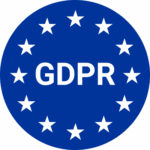
Key Takeaways
The main issue with AI-powered forecasting tools is the “garbage in, garbage out” problem, where unreliable CRM data leads to inaccurate predictions. The solution is a closed-loop forecasting ecosystem that automates both data input and output.
- What it does: An AI agent acts as an intelligent assistant to the sales team, keeping the CRM data clean and up-to-date by understanding natural language from emails and other sources. It can also turn the forecast into a proactive tool. For example, if a deal’s probability of closing is downgraded, an AI agent can automatically compile a deal health summary, draft a re-engagement email, and alert the sales manager.
- The business impact: This transforms the forecast from a passive report into an active engine that not only predicts the future but also helps to influence it.
Fixing the Root Cause of Inaccurate AI Sales Forecasting
For sales and finance leaders, the promise of AI for Sales Forecasting has been monumental. The vision of a system that can accurately predict quarterly revenue and identify at-risk deals is a top priority for any B2B business. Yet, for all the investment in advanced analytics and machine learning models, most organizations are still plagued by a fundamental and frustrating problem: the forecasts are wrong.
The issue isn’t the algorithm; it’s the data. Every AI-powered forecasting tool suffers from the same vulnerability: “garbage in, garbage out.” A forecast is only as reliable as the underlying CRM data, which is often stale, incomplete, or manually entered incorrectly by busy sales reps.
This article is a guide for leaders on how to solve the root cause of inaccurate forecasting. The true value of AI is not just in analyzing the data, but in automating the very processes that create and act upon that data. It’s time to move beyond passive prediction and build a closed-loop, self-improving forecasting ecosystem that doesn’t just guess the future, but actively works to make it better.
The “Garbage In, Garbage Out” Dilemma
The Achilles’ heel of any AI for Sales Forecasting initiative is data quality. Your CRM is the source of truth, but that truth is often murky. Sales representatives are hired to build relationships and close deals, not to be meticulous data entry clerks. As a result, critical information often lives in their email inboxes, meeting notes, and call summaries, but not in the CRM fields that your AI model relies on.
This leads to:
- Stale Opportunities: Deals that have gone cold but are still marked as active.
- Inaccurate Deal Sizes: Vague estimates that are never updated after a discovery call.
- Missing Next Steps: A lack of clarity on the status of a deal.
When your forecasting model is fed this unreliable data, it produces an unreliable prediction. The problem isn’t the AI’s ability to analyze; it’s the lack of a clean, consistent data source.
The Solution is a Closed-Loop Forecasting Ecosystem
A truly intelligent approach to AI for Sales Forecasting requires a shift in thinking. Instead of focusing only on the prediction algorithm, leaders need to build a complete ecosystem that automates both the input and the output of the forecast.
This requires a new class of natural language process automation that acts as the missing operational engine. This engine is an intelligent AI agent that:
- Ensures Data Integrity (The Input): It acts as an AI assistant for your sales team, automatically keeping the CRM pristine.
- Operationalizes Insights (The Output): It takes the forecast’s predictions and triggers intelligent, automated actions.
Part 1: Automating the Input with an AI Agent
The first step to a reliable forecast is to solve the “garbage in” problem without burdening your sales team. A natural language automation platform like Kognitos can act as an intelligent assistant that works in the background.
For example, an AI agent can read a sales rep’s email exchange with a prospect. By understanding the natural language, it can identify key context, such as “The customer has requested a formal quote for 500 units by Friday.” The agent can then autonomously:
- Update the deal size in the CRM to reflect the 500 units.
- Advance the opportunity stage to “Quoting.”
- Create a task for the sales rep with a deadline of Friday to send the quote.
This is a practical application of generative AI for sales. The CRM is updated in real-time with accurate information, directly from the source of the activity, ensuring the data fed into your AI for Sales Forecasting model is as clean and reliable as possible.
Part 2: Automating the Output with Intelligent Workflows
A forecast that simply identifies a problem without initiating a solution is only doing half the job. The second part of a closed-loop system is to automate the actions that should follow from the forecast’s insights.
For example, your AI for Sales Forecasting model might downgrade a high-value deal’s probability of closing from 80% to 40% because it has detected a lack of recent communication. In a traditional setup, this would require a manager to notice the change and manually follow up.
In a closed-loop system, this prediction triggers an AI agent to:
- Instantly compile a “deal health” summary, pulling the entire customer interaction history.
- Draft a personalized “re-engagement” email for the sales rep to review and send.
- Alert the sales manager with the summary and the proposed action.
This turns your forecast from a passive, historical report into a proactive, forward-looking action engine. It’s the key to not just predicting the future, but actively influencing it.
What Lies Ahead
The future of AI for Sales Forecasting is not a better crystal ball; it is an intelligent, autonomous revenue engine. By solving the data integrity problem at the source and automatically translating predictive insights into decisive action, leaders can finally move beyond a culture of reactive course-correction. This closed-loop approach creates a system that is not only more accurate in its predictions but is actively working to improve outcomes, transforming the sales forecast from a static report into the dynamic, reliable pulse of your business.
Discover the Power of Kognitos
Our clients achieved:
- 97%reduction in manual labor cost
- 10xfaster speed to value
- 99%reduction in human error
AI can be used to automate the most time-consuming parts of prospecting. AI sales prospecting tools can research potential leads, identify key decision-makers, and even draft personalized outreach emails. By using an AI agent to handle this top-of-funnel research and data entry, sales teams can focus their time on building relationships with the most qualified prospects, whose information is then cleanly fed into the CRM for accurate forecasting.
AI helps build a sales funnel by ensuring a consistent and high-quality flow of leads. AI prospecting tools can identify ideal customer profiles and automate initial outreach. As leads respond, a natural language AI can interpret their responses, qualify them based on pre-defined criteria, and automatically update the CRM, seamlessly moving them from a raw lead to a qualified opportunity without manual intervention.
The primary benefits are efficiency and effectiveness. It allows sales reps to spend significantly more time on selling and less on manual research and data entry. Furthermore, AI prospecting tools can analyze data at a scale impossible for humans, identifying high-potential leads that might otherwise be missed. This leads to a larger, higher-quality sales funnel, which is the foundation of any reliable sales forecast. This use of generative AI for sales is transforming how teams approach prospecting.








